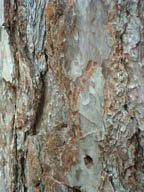Experimenting with still life, coloured pencil in A3 moleskine sketchbook
Cat carving and cardoon by lamplight, coloured pencil in A3 moleskine
Still looking at the items on the shelf above the tv but moving them around on paper, rearranging and looking at pattern and colour. They aren't in the positions I've drawn them in at all and I've simply used the colour of the vase, though lightening it, not wanting the vase itself explained. The same with the wheat and hearts patterns. Warm light from the lamp and the cool lavender shades are observed so that the whole thing hangs together.
Below are the earlier stages as it evolved. I only have a rough idea of the final piece when doing this, unlike a traditional set up, where everything is where it will be in the image. It evolves as I go. Major elements like the cat carving, cardoon, blue of the vase and the honesty are decided immediately - they are the skeleton that everything hangs on. Decisions about depth of tone, lost edges, patterns of wheat and the hearts and scrolls, taken from a little chest of drawersare all decided as I go; as was the late addition of an amber border, which allowed the cream of the paper to be something in its own right in the cardoon and honesty.
In paint or charcoal or ink I work fast and fairly freely. The initial.sketchy lines establishing the positions of elements in this were also done freely but, after that, building optical mixes of colour and deepening tones is a slow meditative way of working, giving lots of 'thinking' time as to where next.
I do like the way that you can make colours subtly change with layering in coloured pencil. I'm much too impatient to work in it all the time but for subjects like this I'm enjoying it.
Stage 2 with more depth of tone to the background and the wheat and hearts patterns added
I added the hearts and scrolls design in the background at this stage - but knocked them back into shadow at the end as they conflicted with the honesty, taking away from its lovely simple shapes. I didn't want the background completely plain though.
stage one. with the major elements in but lots of decisions still to be made about the background and depth of tone
A Derwent battery eraser was used as a drawing tool, taking out the shapes of the wheat ears (but leaving them simply as pattern, not detailed) and some of the small highlights in the cardoon.
I occasionally smudge colour in base layers to lose the paper colour entirely but don't burnish, liking the optical mix and texture of colours.
This is in a moleskine book. It's waxy paper works well with pencil and ink and erases cleanly - but is so limiting to me with its inability to cope with paint. Had this been on other paper I might have done a watercolour/coloured pencil mixed media piece.
As I've said before, I enjoy doing studies of individual still life objects but can't get excited about doing traditional still life set ups - as-is - what a friend describes as a clump, a lump and a vessel, all in a row. This is me thinking around ways to make it more interesting to me and taking away that 'given' element, where the result is known at the start and I negotiate my way through. I'm enjoying it more than I expected :>)
Let me know your thoughts???






Comments
Yes, changes of speed and reaction are good.
I've pushed the darks a little more this morning ... all is subject to change!